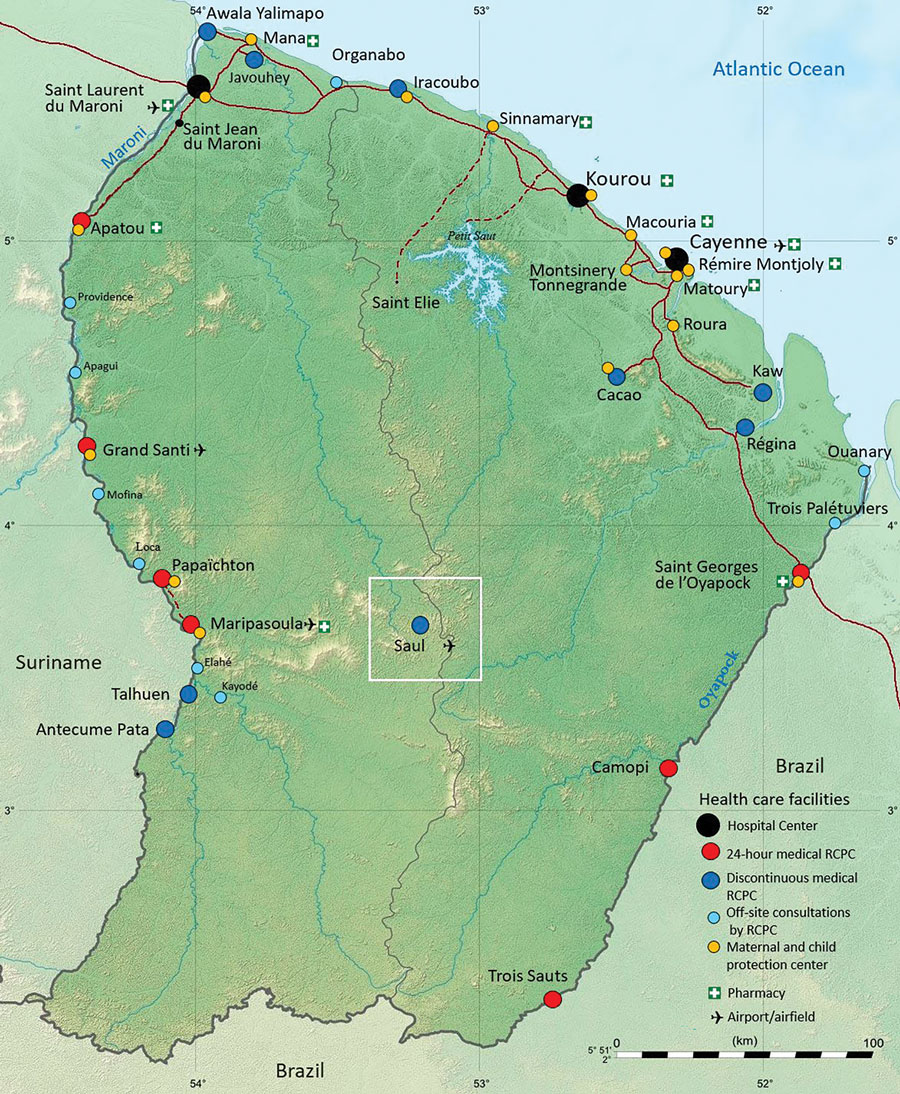Volume 27, Number 10—October 2021
Dispatch
Outbreak of Oropouche Virus in French Guiana
Figure 1

Figure 1. Locations of the town of Saül and 17 remote centers for prevention and care in French Guiana. Black circles: hospital centers; red circles: 24-hour remote centers for prevention and care; dark blue circles: remote centers for prevention and care (not 24-hour); light blue circles: off-site consultations with remote center for prevention and care; orange circles: maternal and child protection centers. Source: Dr. Elise Martin, Centre Hospitalier de Cayenne, French Guiana.
1These authors contributed equally to the work.
Page created: July 30, 2021
Page updated: September 19, 2021
Page reviewed: September 19, 2021
The conclusions, findings, and opinions expressed by authors contributing to this journal do not necessarily reflect the official position of the U.S. Department of Health and Human Services, the Public Health Service, the Centers for Disease Control and Prevention, or the authors' affiliated institutions. Use of trade names is for identification only and does not imply endorsement by any of the groups named above.